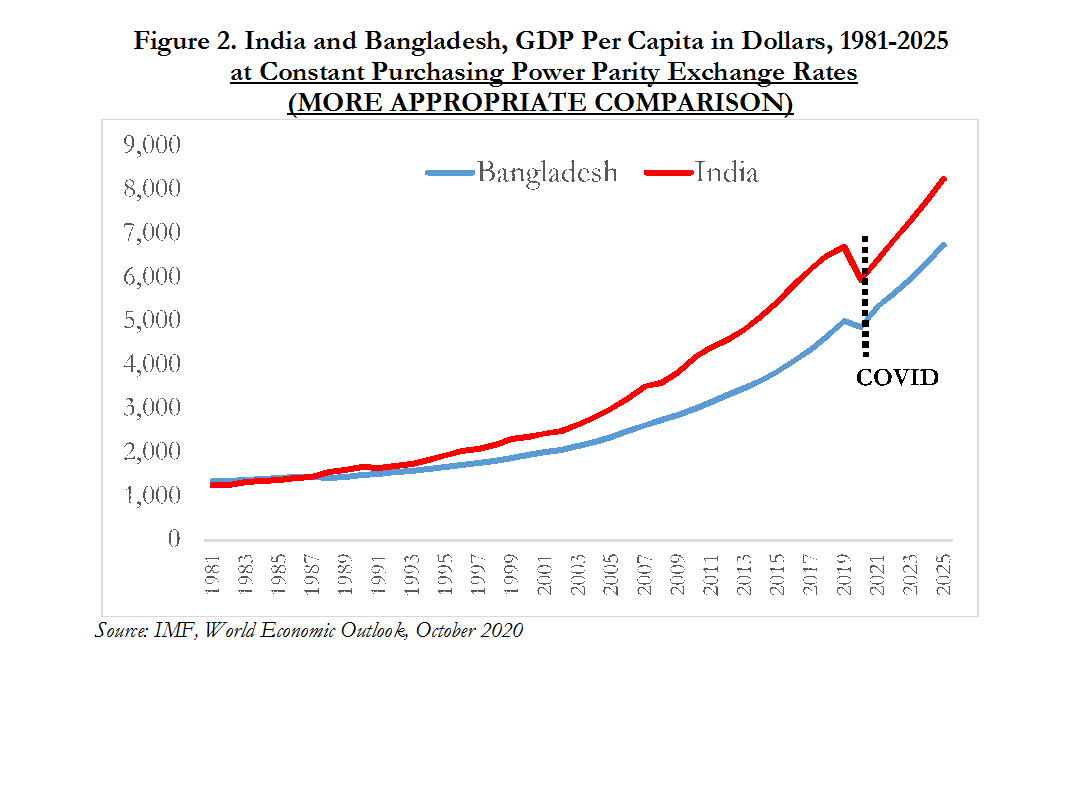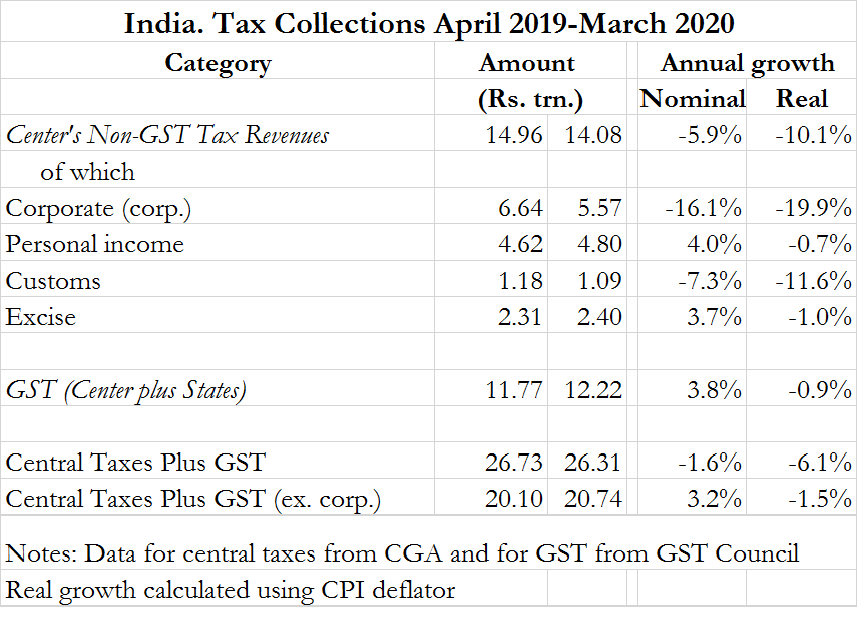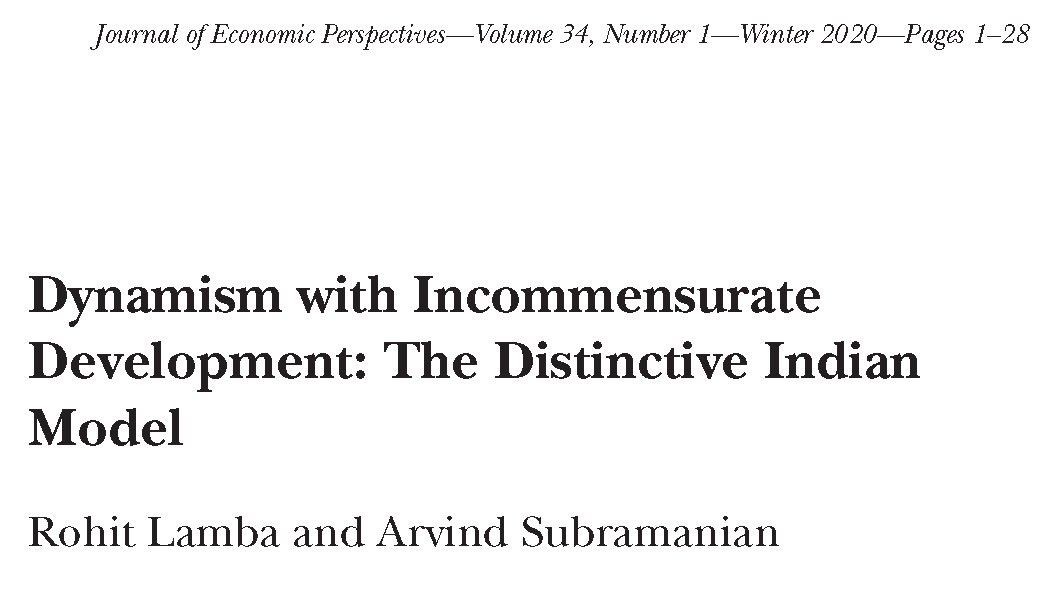
Excited about first research outputs from @AshokaUniv Center for Economic Policy (ACEP) on India's Exports and Growth
Research paper: ashoka.edu.in/static/doc_upl…
Policy paper: ashoka.edu.in/static/doc_upl…
w/ @shoumitro_c
1/

Research paper: ashoka.edu.in/static/doc_upl…
Policy paper: ashoka.edu.in/static/doc_upl…
w/ @shoumitro_c
1/
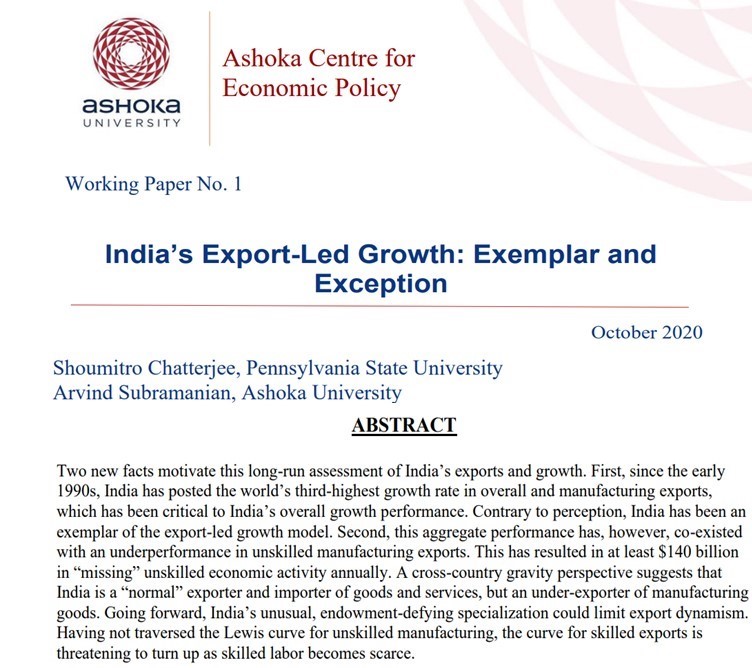
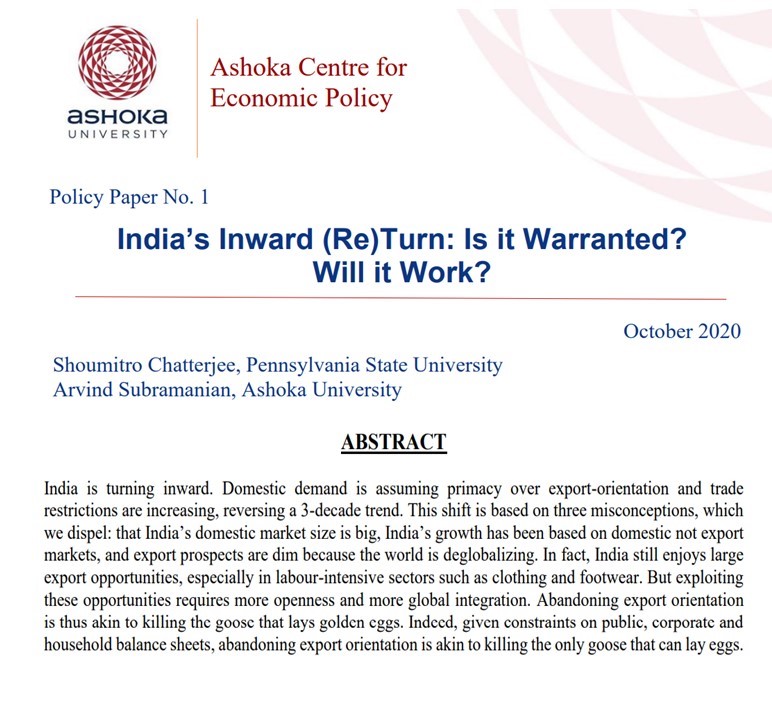
Focus here is on policy paper.
India's inward turn ("atmanirbharta"):
-favoring domestic demand over exports (macro)
-imposing barriers favoring domestic production (trade)
...is consequential
3 questions
1. Is inward turn strong?
2. Is it warranted?
3. Will it work?
2/
India's inward turn ("atmanirbharta"):
-favoring domestic demand over exports (macro)
-imposing barriers favoring domestic production (trade)
...is consequential
3 questions
1. Is inward turn strong?
2. Is it warranted?
3. Will it work?
2/
Our @IndianExpress piece today (another tomorrow) covers questions 1 and 2: indianexpress.com/article/opinio…
Is Inward turn strong?
Yes: on trade, tariffs up, standstill on trade agreements, and slew of incentives/subsidies for domestic manufacturing.
3/
Is Inward turn strong?
Yes: on trade, tariffs up, standstill on trade agreements, and slew of incentives/subsidies for domestic manufacturing.
3/
Tariff picture striking
Average up from 13% to 18% between 2014 and 2020
Tariff increases affect 3200 import categories (70%) or about $300 billion
Increases greatest (10-20 % pts) on low-skill manufactures (clothing, footwear etc.)
4/
Average up from 13% to 18% between 2014 and 2020
Tariff increases affect 3200 import categories (70%) or about $300 billion
Increases greatest (10-20 % pts) on low-skill manufactures (clothing, footwear etc.)
4/
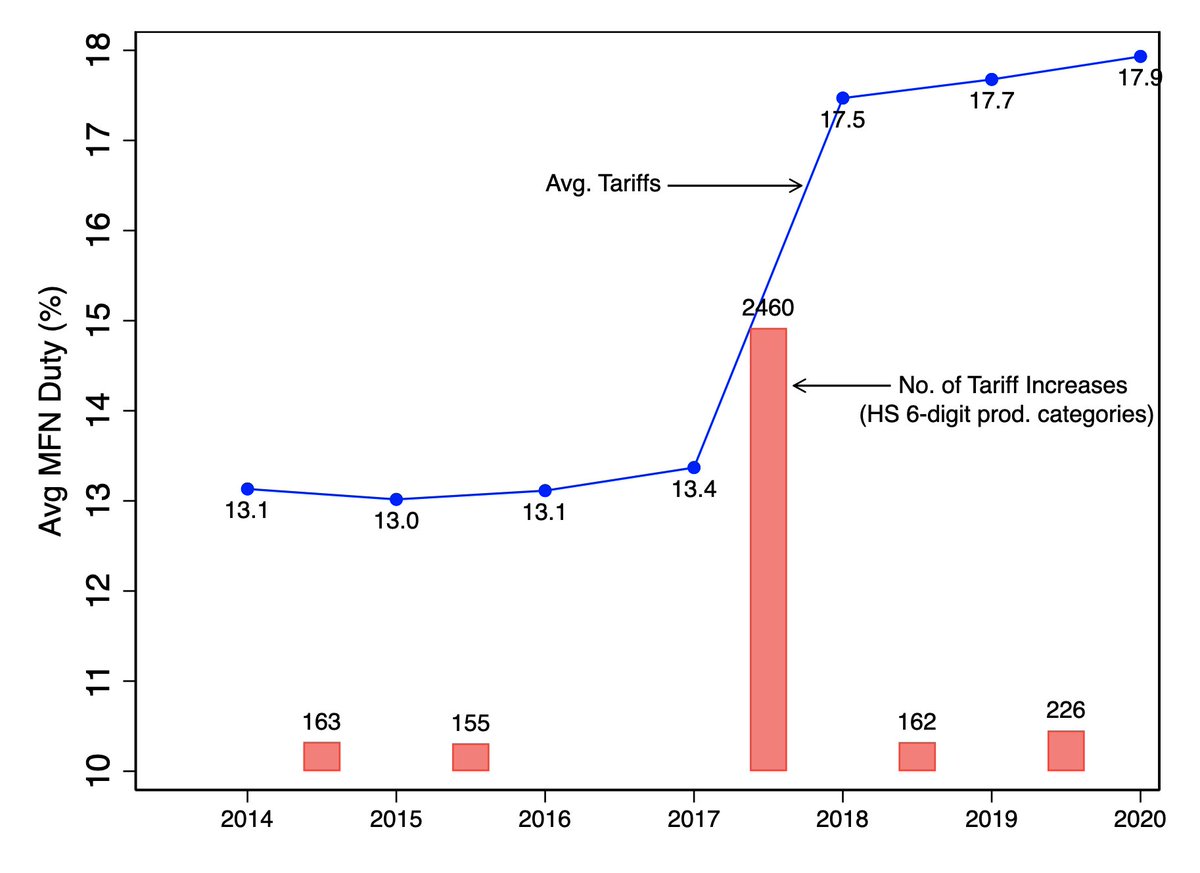
3 "myths" behind inward turn
1: India's growth based on domestic market not exports. NO, India was East Asian TIGER
India's exports b/w 1995-2018 stellar, not just services but manufacturing. Critical to overall growth
Mfg exp. growth (12%), 3rd fastest in world: WOW
5/
1: India's growth based on domestic market not exports. NO, India was East Asian TIGER
India's exports b/w 1995-2018 stellar, not just services but manufacturing. Critical to overall growth
Mfg exp. growth (12%), 3rd fastest in world: WOW
5/
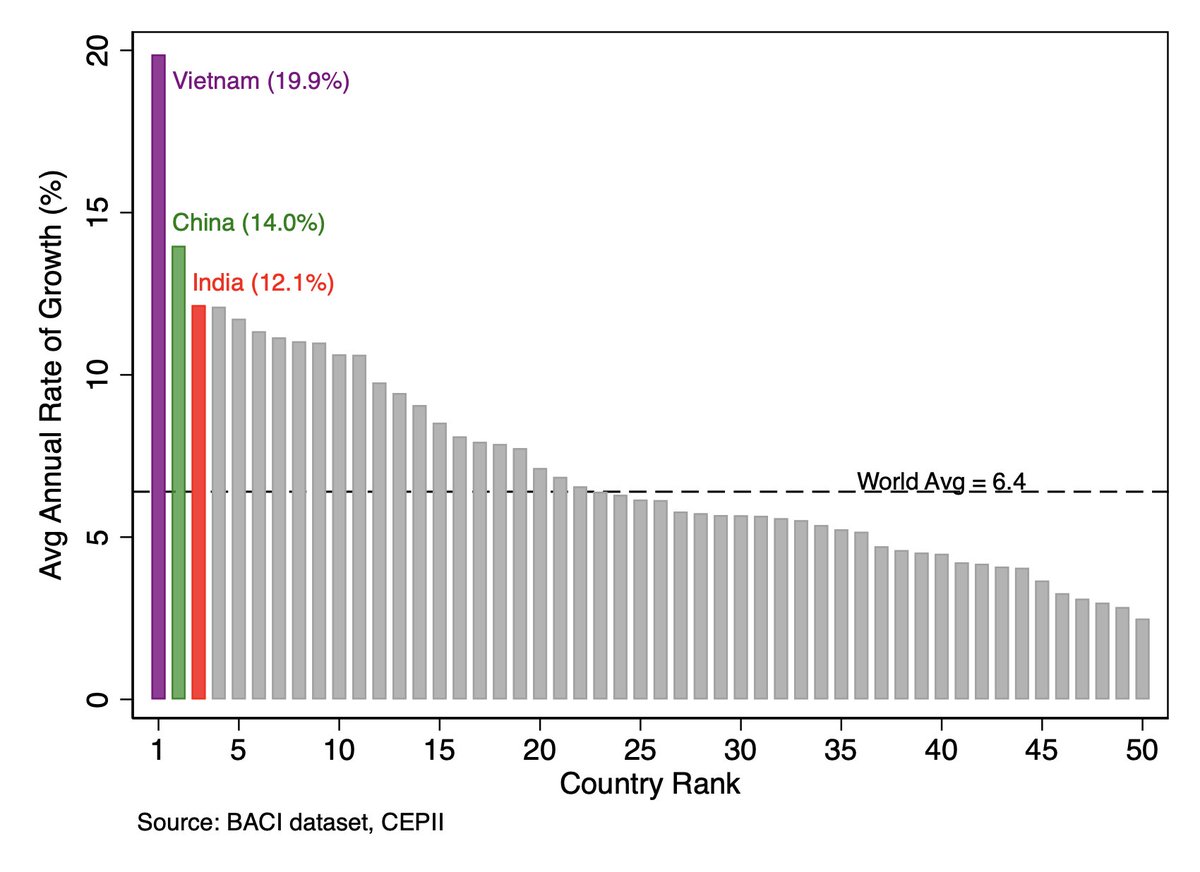
Even in post-2012 export growth slowdown:
India outpaced world
and Indian slowdown partly self-inflicted, e.g. by rupee appreciation and other policies
6/

India outpaced world
and Indian slowdown partly self-inflicted, e.g. by rupee appreciation and other policies
6/
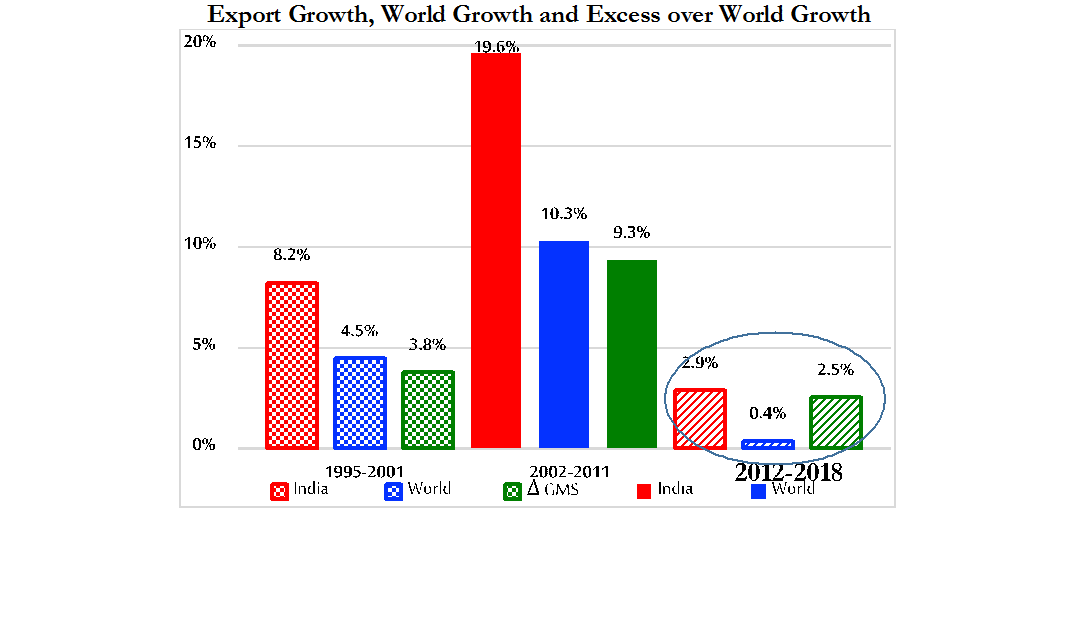
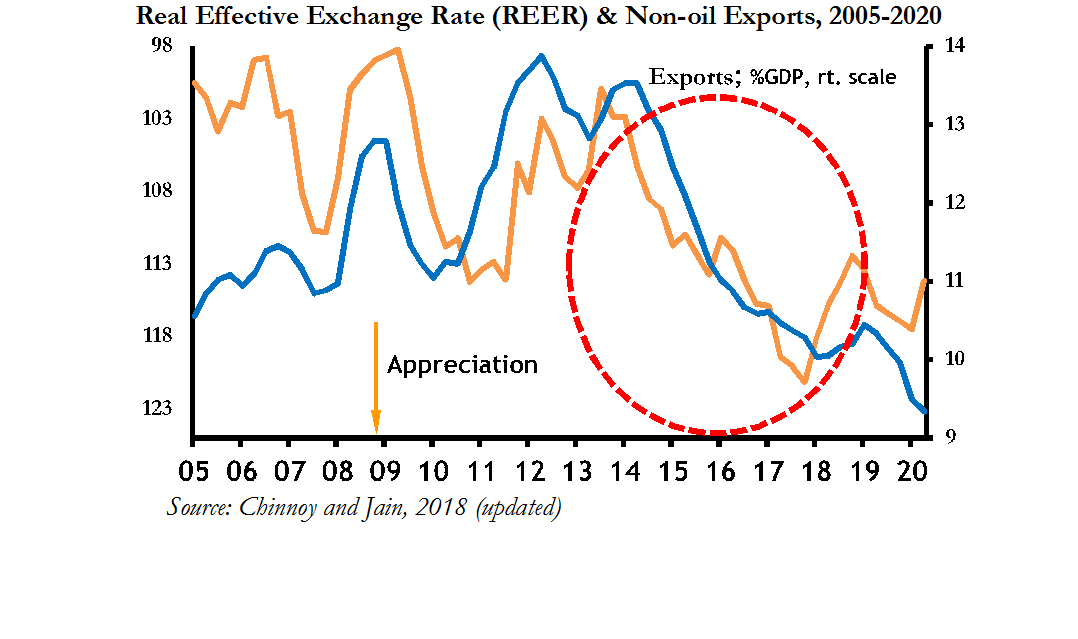
"Myth" 2: Export prospects dim. NOT REALLY
India's mfg. exp. global share small:1.7% < Vietnam. Scope for gaining market share even w/ deglobalization
Opportunity in low-skill exports. India under-performs relative to labor endowment ("missing" exp./output= $60-$140 bn.)
7/
India's mfg. exp. global share small:1.7% < Vietnam. Scope for gaining market share even w/ deglobalization
Opportunity in low-skill exports. India under-performs relative to labor endowment ("missing" exp./output= $60-$140 bn.)
7/
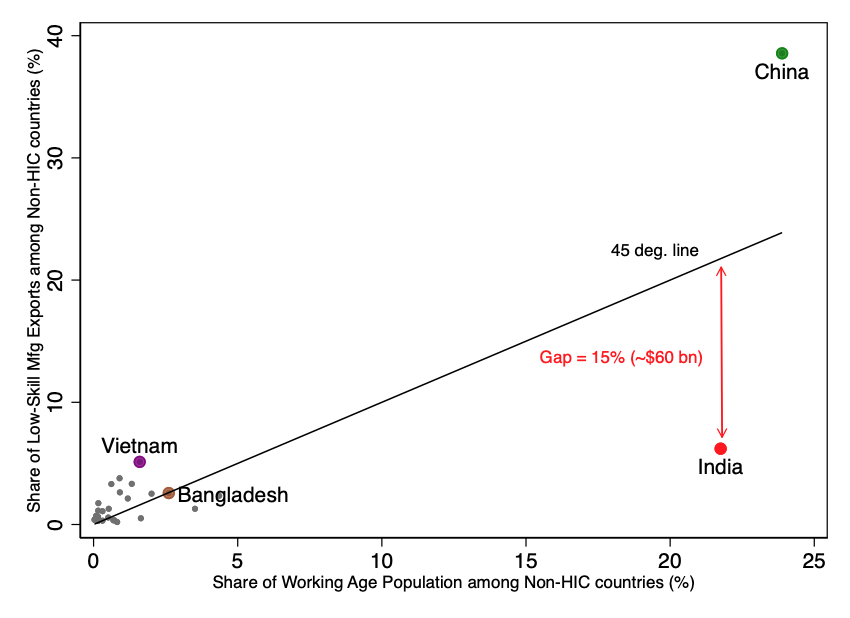
… moreover, even though world is deglobalizing in goods, it continues to globalize in services.
Also, Covid by favouring activity-at-a-distance could accelerate services globalization
India stands to benefit because it is still competitive in services
8/
Also, Covid by favouring activity-at-a-distance could accelerate services globalization
India stands to benefit because it is still competitive in services
8/
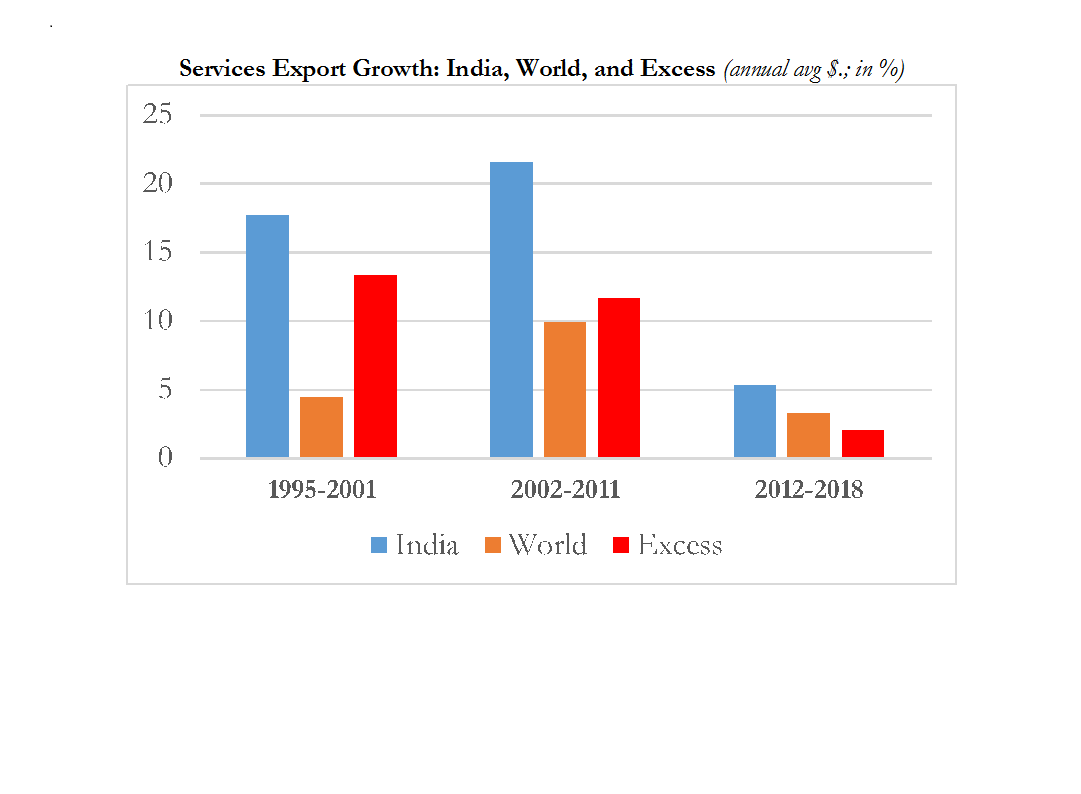
"Myth" 3: India has a BIG market, so export neglect not costly. NOT REALLY
GDP of $2.9 trillion (2019), world’s 5th largest
But "middle class" market w/ purchasing power much less than GDP
Why? Large popn. of rel. poor & lots of income w/ those who save a lot (~40%)
9/
GDP of $2.9 trillion (2019), world’s 5th largest
But "middle class" market w/ purchasing power much less than GDP
Why? Large popn. of rel. poor & lots of income w/ those who save a lot (~40%)
9/
Will prescriptions work?
1. Domestic demand over exports
History
Pre-1991, export growth=4.5%; real GDP=3.5%
Post-1991, 11% and ~6.5%
Why abandon success?
Today
ALL balance sheets propping domestic demand bleeding: firms & banks (pvt. invt), h/hold (consmpn) & govt.
10/
1. Domestic demand over exports
History
Pre-1991, export growth=4.5%; real GDP=3.5%
Post-1991, 11% and ~6.5%
Why abandon success?
Today
ALL balance sheets propping domestic demand bleeding: firms & banks (pvt. invt), h/hold (consmpn) & govt.
10/
Take government, most important demand source
Pre-Covid: Public debt & interest-growth trajectory worsening
Post-Covid,3 knocks: higher debt/GDP (10-15 ppts), larger primary deficit & R-G differential from weaker growth
Fisc. Can/must prop recovery but long-run growth?
11/
Pre-Covid: Public debt & interest-growth trajectory worsening
Post-Covid,3 knocks: higher debt/GDP (10-15 ppts), larger primary deficit & R-G differential from weaker growth
Fisc. Can/must prop recovery but long-run growth?
11/
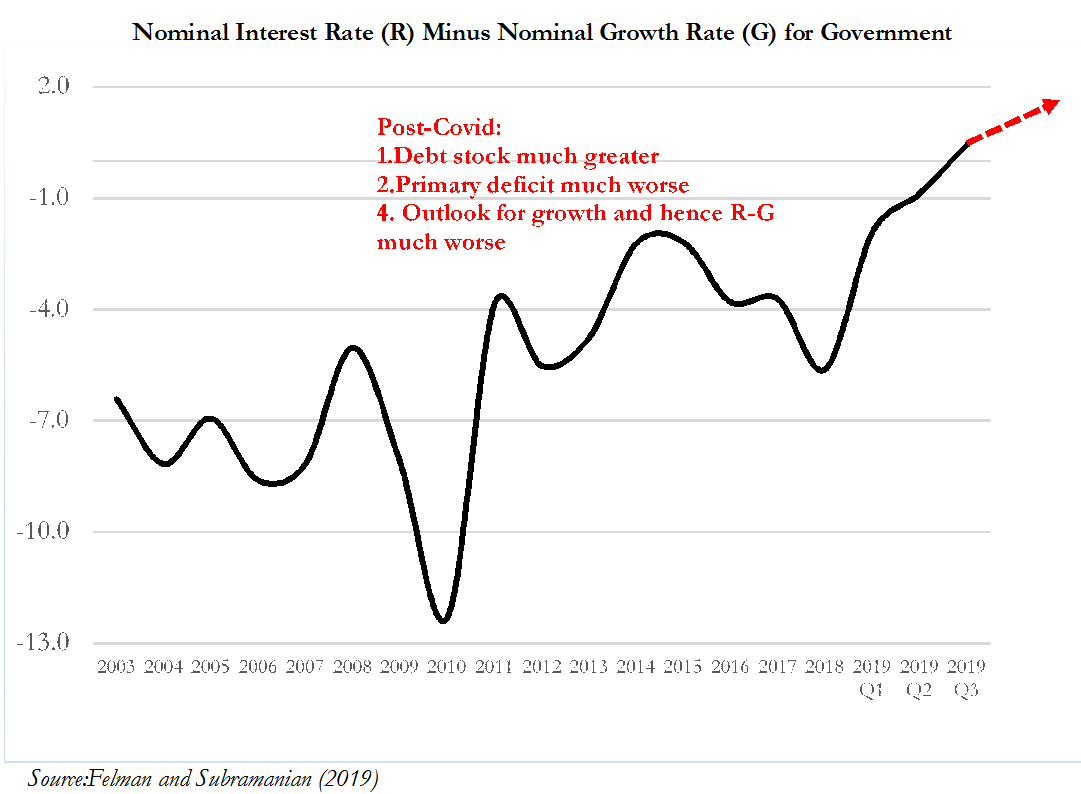
2.Can protectionism boost exports?
China vacating export space as wages rise & investors hedge bets, so India's big opportunity is low-skill exports
But this requires more not less openness, e.g. FTA with EU
Take clothing: needed import content much higher than India's
12/
China vacating export space as wages rise & investors hedge bets, so India's big opportunity is low-skill exports
But this requires more not less openness, e.g. FTA with EU
Take clothing: needed import content much higher than India's
12/

In sum, abandoning export orientation seems like:
-killing the goose that lays golden eggs
-Indeed, with balance sheets bleeding, killing the only goose than can lay eggs
India must double down on export orientation to save economy from a trajectory of mediocrity
13/
-killing the goose that lays golden eggs
-Indeed, with balance sheets bleeding, killing the only goose than can lay eggs
India must double down on export orientation to save economy from a trajectory of mediocrity
13/
Our policy and research papers build on our contribution to important @PIIE volume on US-India economic relations, featuring terrific contributions from colleagues: piie.com/publications/p…
n/
n/
• • •
Missing some Tweet in this thread? You can try to
force a refresh


